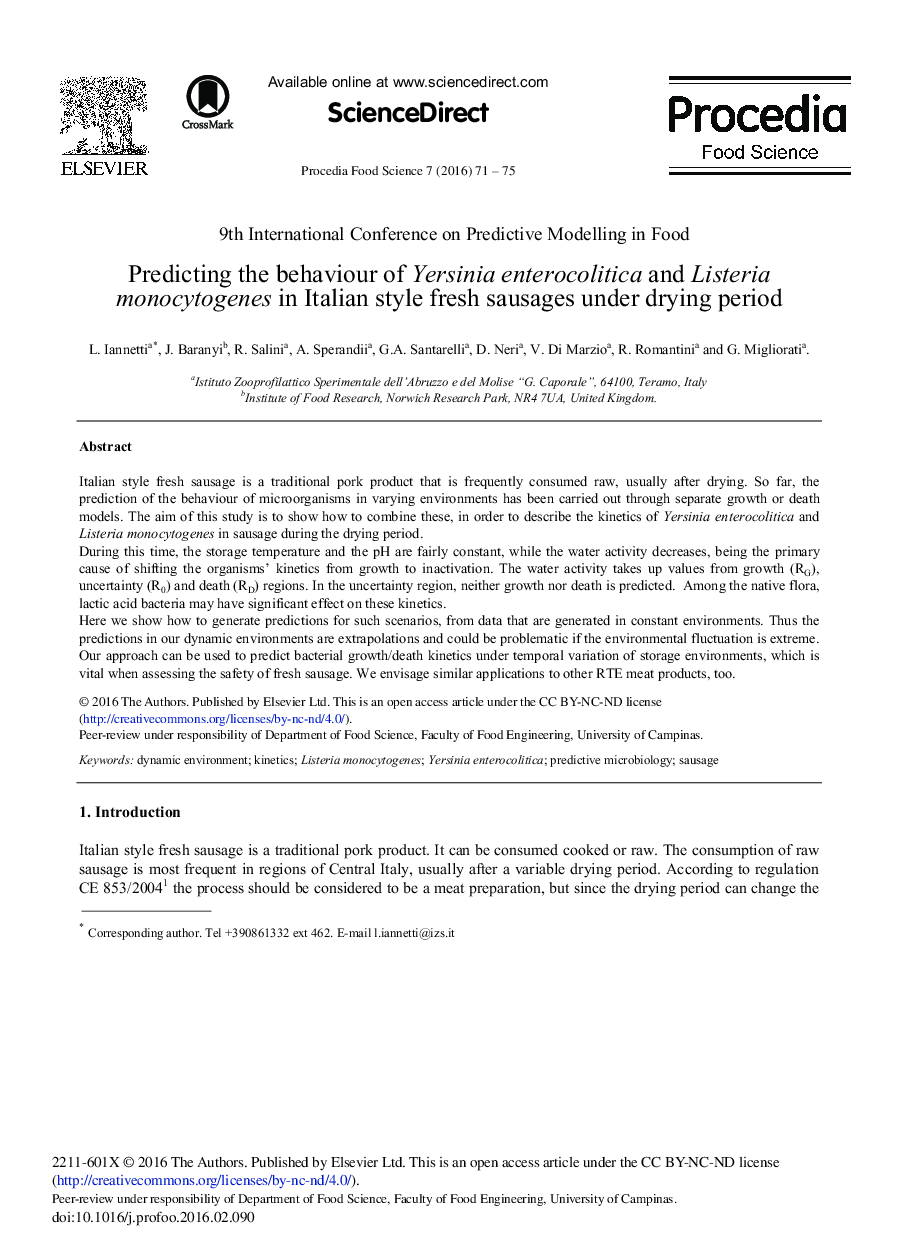| Article ID | Journal | Published Year | Pages | File Type |
|---|---|---|---|---|
| 1266053 | Procedia Food Science | 2016 | 5 Pages |
Italian style fresh sausage is a traditional pork product that is frequently consumed raw, usually after drying. So far, the prediction of the behaviour of microorganisms in varying environments has been carried out through separate growth or death models. The aim of this study is to show how to combine these, in order to describe the kinetics of Yersinia enterocolitica and Listeria monocytogenes in sausage during the drying period.During this time, the storage temperature and the pH are fairly constant, while the water activity decreases, being the primary cause of shifting the organisms’ kinetics from growth to inactivation. The water activity takes up values from growth (RG), uncertainty (R0) and death (RD) regions. In the uncertainty region, neither growth nor death is predicted. Among the native flora, lactic acid bacteria may have significant effect on these kinetics.Here we show how to generate predictions for such scenarios, from data that are generated in constant environments. Thus the predictions in our dynamic environments are extrapolations and could be problematic if the environmental fluctuation is extreme. Our approach can be used to predict bacterial growth/death kinetics under temporal variation of storage environments, which is vital when assessing the safety of fresh sausage. We envisage similar applications to other RTE meat products, too.
